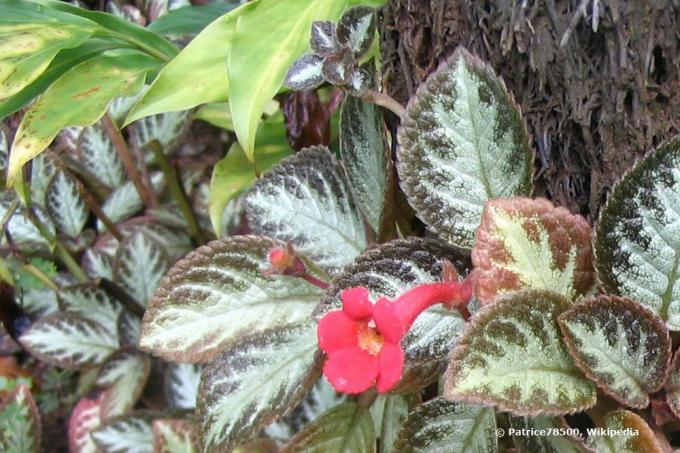
table of contents
- plants
- Suitable plants
- Plants with B
- Plants with D
- Plants G to J
- Plants with K
- Plants with R
- Plants with S
If a velvet paw is part of the household, then above all attention must be paid to the right green in the living rooms. Because many plants are in a certain way poisonous for the curious house tigers who like to nibble on the leaves. But no owner of a cat has to do without the decorative green in their own home completely, because there are also non-toxic plants that can be placed in the home without worry to be allowed to.
plants
Even if a plant is not poisonous, it can still be unsuitable for a cat household. Because it also depends on the nature of a plant, if it is sharp-edged, has pointed leaves or thorns and spines, then injuries are often inevitable here. In addition, the non-toxic plants that are in a cat household should not be supplied with biochemical substances, as they could otherwise become poisonous for the velvet paws. Because the plants absorb the substances and store them in the leaves, which the cat could nibble on. But even such plants do not have to be disposed of, the following procedure can be used.
- inaccessible to the cat
- either in an enclosed space
- or so high that the cat cannot get there
- on a single board high up on the wall
- in a closed winter garden

Suitable plants
Otherwise there is a list of non-toxic plants that can be cultivated in the living rooms without hesitation, even if a house tiger belongs to the household.
Plants with B
Blue Lieschen
Blue Lieschen, which is absolutely non-toxic, is only suitable for the summer months. Unfortunately, it is annual and it is usually not possible to bring the plant through the winter. Nevertheless, it can be stored again for the next year by removing cuttings before winter. The flowering plant is a balcony flower, but since cats are often out and about, the balcony plants must also be absolutely non-toxic. The maintenance should look like this.
- Sunny to partially shaded location
- flowers from May to September
- pour moderately
- requires few nutrients
In the flowering period from May to September, the blue lizards shows small, blue-violet or white flowers that stretch over the plant like a carpet.

Plants with D
Thick leaf or Money tree
The plants that belong to the thick leaves, Crassulaceae, belong to the succulents and are the perfect ones Houseplants. Above all, the different varieties also have very interesting names. The thick leaves are often only known to be quite small, but can reach a stately height of up to one and a half meters. The right location must be offered, it should be very bright and sunny. The thick leaves store moisture and the plant therefore only needs moderate watering and fertilization. The flowering time of the different varieties extends from autumn to summer. The following non-toxic specimens should be mentioned here.
- Gollum, reminiscent of a bundle of alien fingers
- Blue Bird, has slightly red edges
- Ripple jade
- Hulk

Plants G to J
Green lily
The green lily is a decorative and good alternative to cat grass. The stalks are soft and the plant is non-toxic. So the cat can nibble on it without hesitation. The plant is also available in three different versions. There is the green variety, the green-white variety with straight, smooth leaves and the green-white variety with wavy leaves. The maintenance of Chlorophytum comosum is also very easy and is designed as follows.
- partially shaded to shady location
- can therefore also find a place in a corner of the room
- permeable substrate
- Avoid waterlogging
- fertilize regularly
- with organic fertilizer
However, caution is advised with this plant if it is to be placed in a smoker's household. Because if it comes into contact with smoke, it filters the pollutants, which can then become toxic again for cats. Therefore, it should only be set up in a smoke-free room, for example the bedroom, if the cat has access.
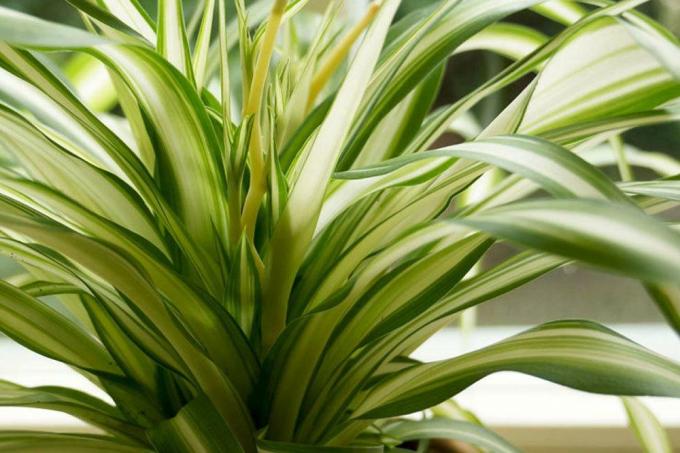
hibiscus
The plants from the hibiscus family are just as suitable for living spaces as they are for a place on the balcony or terrace in summer. If it is bright and warm in winter, it will bloom in late winter. The colors of the flowers vary from white to pink to orange or various shades of purple. The hibiscus can be cultivated to keep it small, but it becomes a large vessel for it required, then it can grow over several meters, the location in a winter garden would be in such a place Case ideal. Caring for the decorative hibiscus is very easy.
- bright, sunny location
- pour moderately
- fertilize little
- Avoid waterlogging

jasmine
The jasmine is said to be not very easy to care for. However, this is the case with that Summer jasmine Solanum different. The container plant develops its graceful white flowers with the yellow dot in the middle with little care. If the location is warm and sheltered, it will grow luxuriantly. It does not need full sun for this, but is also in good hands in a partially shaded location. In order for the jasmine to bloom abundantly on the windowsill, it should be given the following care.
- warm location even in winter
- then the leaves will not be thrown off
- water regularly
- ideally over the lower shell
- fertilize regularly
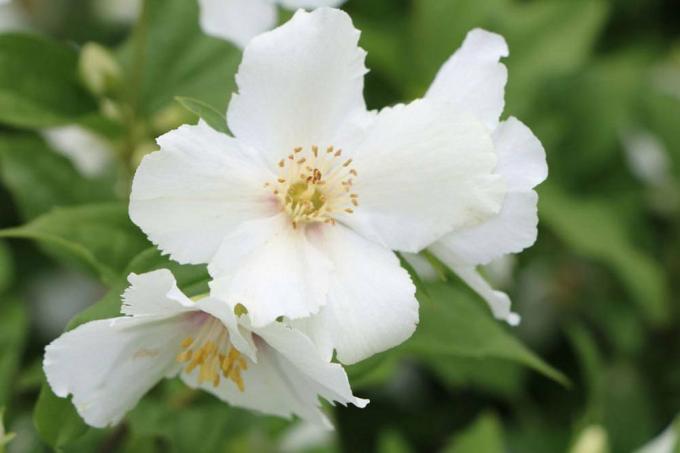
Plants with K
Cat grass
The classic among cat lovers is of course the cat grass, which should not be missing in any household with a cat. Because this is not only suitable as a decorative plant, it is also one of the most important Dietary supplement for domestic cats that have no way of using blades of grass outdoors Wolf down. At least one plant of cat grass should be available in every cat household. You can sow the grass yourself with a seed mixture from a well-stocked gardening specialist. Maintenance is simple and looks like this.
- do not fertilize
- otherwise the cat can absorb toxic substances
- water regularly
- always re-sow
- so there is always grass available for the cat
If the house tiger is not provided with cat grass in the apartment and it is the cat not a free walker, then the owner has to have a lot of nibbled leaves on other plants calculate.

camellia
In winter the camellia shows its attractive flowers. Even if it is known to be difficult in nursing, this is not the case. Because if it is given the right care, it will show its large red, pink or white flowers again every winter. For this, however, it needs colder temperatures for education, so it is in good hands in an unheated winter garden, a bright staircase or a bedroom. A location on a sheltered terrace or balcony is also ideal for the graceful plant. The maintenance should look like this here.
- use rhododendron fertilizer for fertilization
- fertilize only a little
- pour moderately
- Avoid waterlogging
- Avoid drafts

Coconut palm
The graceful coconut palm, which above all needs a lot of light to thrive, is slender and tall. Therefore, a place next to a window with enough light and sunlight is ideal for the plant. However, it should not be placed next to a heater, as it could get too warm here in winter. The following conditions are ideal for Cocos nucifera to grow well.
- grows directly from the nut
- do not pour on the nut
- otherwise it could go moldy
- Temperature between 16 ° to 18 ° Celsius is ideal
- therefore also suitable for a bedroom or stairwell
- fertilize regularly with organic fertilizer
The trade offers various fertilizers that consist of biological substances and are therefore not chemically produced. Of course, compost is still one of the best fertilizers, usually not so suitable for indoor plants because of the smell. But for this purpose, pressed pellets, for example with cattle manure, are available commercially.
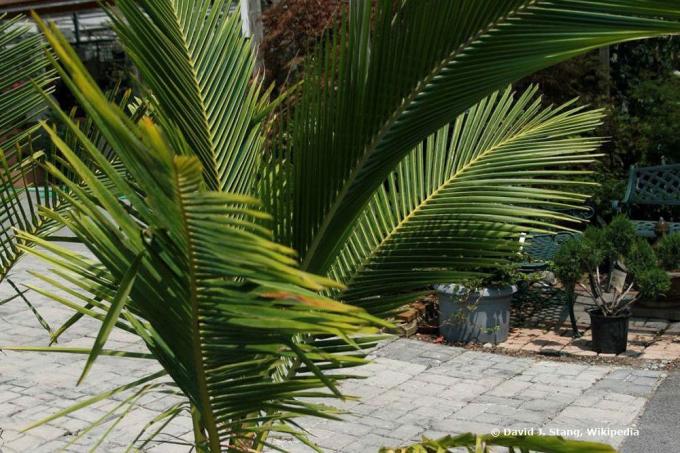
Kentia palm
The Kentia palm is also known under the name Howea and gives every room that special green note. However, since it looks similar to the poisonous mountain palm, it is easy to confuse these two plants. Therefore, when buying, you should pay close attention to the signs. The Kentia palm has many long, green leaves and does not even need a very bright location for this. The easy-care plant wants the following conditions.
- light to shady everything is allowed
- therefore also suitable for room corners
- needs a lot of water
- don't let it get dry
- fertilize regularly with organic fertilizer
- in the form of pressed cattle manure
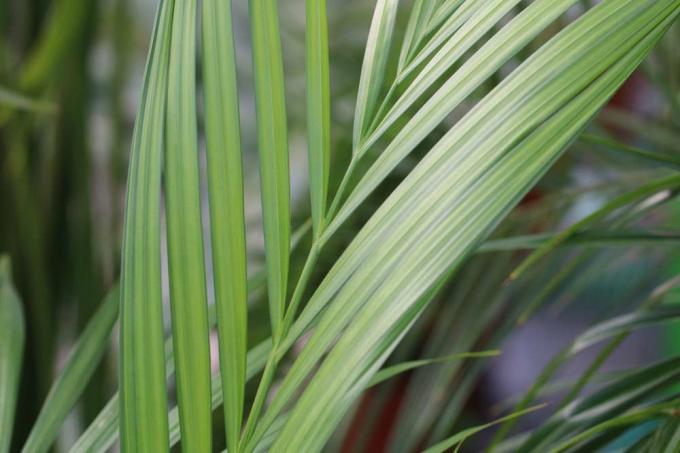
Basket margin
The basket marante has the advantage that it can be cultivated as a small plant on the windowsill, but it will have enough space for the roots and their extravagant growth, it can then be up to two meters high and every corner of the room beautify. Above all, the plant is an absolute wonder of color, the leaves that close at night are lush green on the top and aubergine-colored on the underside. Caring for the graceful plant is easy.
- bright location
- Nutrient-rich and well-drained substrate
- is also suitable in hydroponics
- fertilize regularly
- always keep moist
- Avoid waterlogging
House plants with large leaves should be dusted regularly, this is not only good for their appearance, but also to absorb certain substances from the air.

Corkscrew rush
The sturdy corkscrew rush still needs a little maintenance to thrive. The plant is also known as love bells because of its ornate shoots. The plant prefers wet soils as it is originally a marsh plant. The good thing is that she never suffers from root rot. The motto here is really, a lot helps a lot, because the corkscrew rasp should not dry out under any circumstances. Otherwise, the following is to be said about their care.
- wet, bright location
- also works well on an indoor fountain
- fertilize little
This plant is a green plant that can get very tall if it is offered the appropriate location, for example in a winter garden.

Plants with R
Rose of Jericho
A plant that really forgives everything is the rose of Jericho. The fantastic plant does not need earth, it is simply placed in a bowl of water when it is supposed to open. When the water is used up, it closes again. The curly shape is decorative and looks wonderful on a windowsill. She noticed her characteristic because it is a desert plant that has to do without water for a long time.

Rosette thick leaf
The rosette thick leaf, which impresses with its graceful rosette-like shape, also belongs to the succulents. Because the leaves, shaped like flowers, are formed directly from the trunk. But the rosette thick leaf expects a little more encouragement and care and is therefore not very easy to care for, especially because it is in winter Move to a cooler location, such as an unheated conservatory, a bright stairwell, or a bedroom window sill should. At the end of winter, multi-flowered, yellow inflorescences form. The maintenance looks like this.
- bright and hot in summer
- Sun exposure is absolutely tolerated
- tolerates prolonged drought
- stores water in the thick leaves
- fertilize regularly

Plants with S
Sword fern
As a rule, the ferns are considered poisonous, but there is an exception, because the sword fan is harmless, but also very demanding in terms of care. Above all, Nephrolebis exlata needs the right mixture of watering in order to thrive properly. So it should never be too dry but not too wet either. Cultivated in a hydroponic culture, it can draw the required amount of water by itself. Caring for the demanding plant should continue as follows.
- it reacts to care mistakes with brown tips or leaves
- then reduce or increase the amount of water
- Examine the roots
- is watering the earth dry more
- if the fern is too wet, remove it from the container
- use dry, fresh soil
- Repot every three years
- can then be increased through separation
- fertilize regularly
Sword enthusiasts like it bright to sunny, but too much sunlight through a window can cause sunburn, which is reflected in the leaves, which look burned and bright.

Shadow tube
There are many different varieties of the graceful shadow tube, which belongs to the Gesneria family. Depending on the variety, the leaves are bronze or green with dark and light veins. The plant shows its small red flowers throughout the summer. However, these only develop if the shadow tube is given the desired attention. The plants can be used as ampelous plants or as Ground cover be cultivated in large pots. The maintenance should look like this.
- Location partially shaded
- not dark, then it will not grow
- keep warm all year round
- Temperatures not below 16 ° Celsius
- wants humidity
- can be generated by a humidifier
- no drafts
- Fertilize evenly moist and regularly
